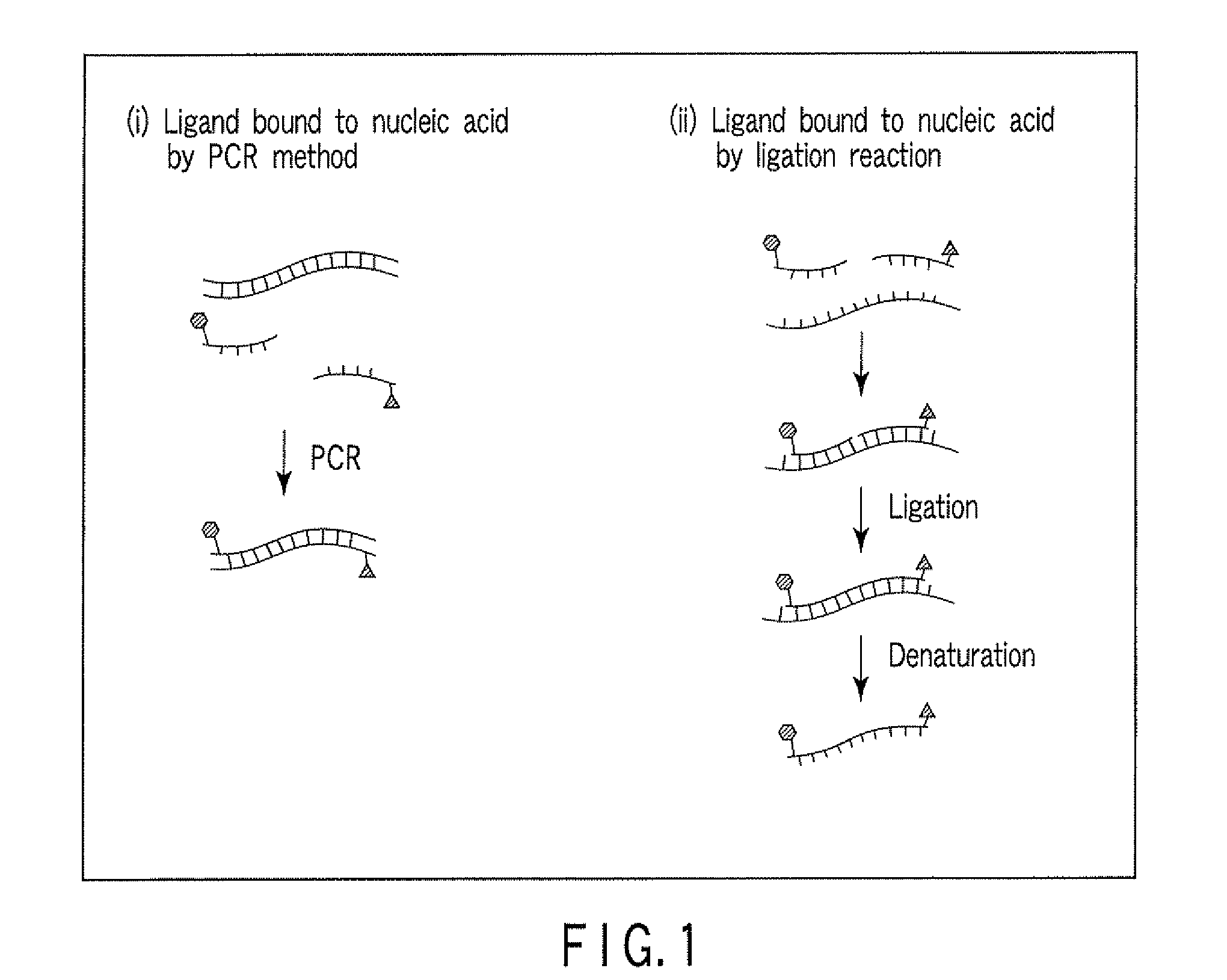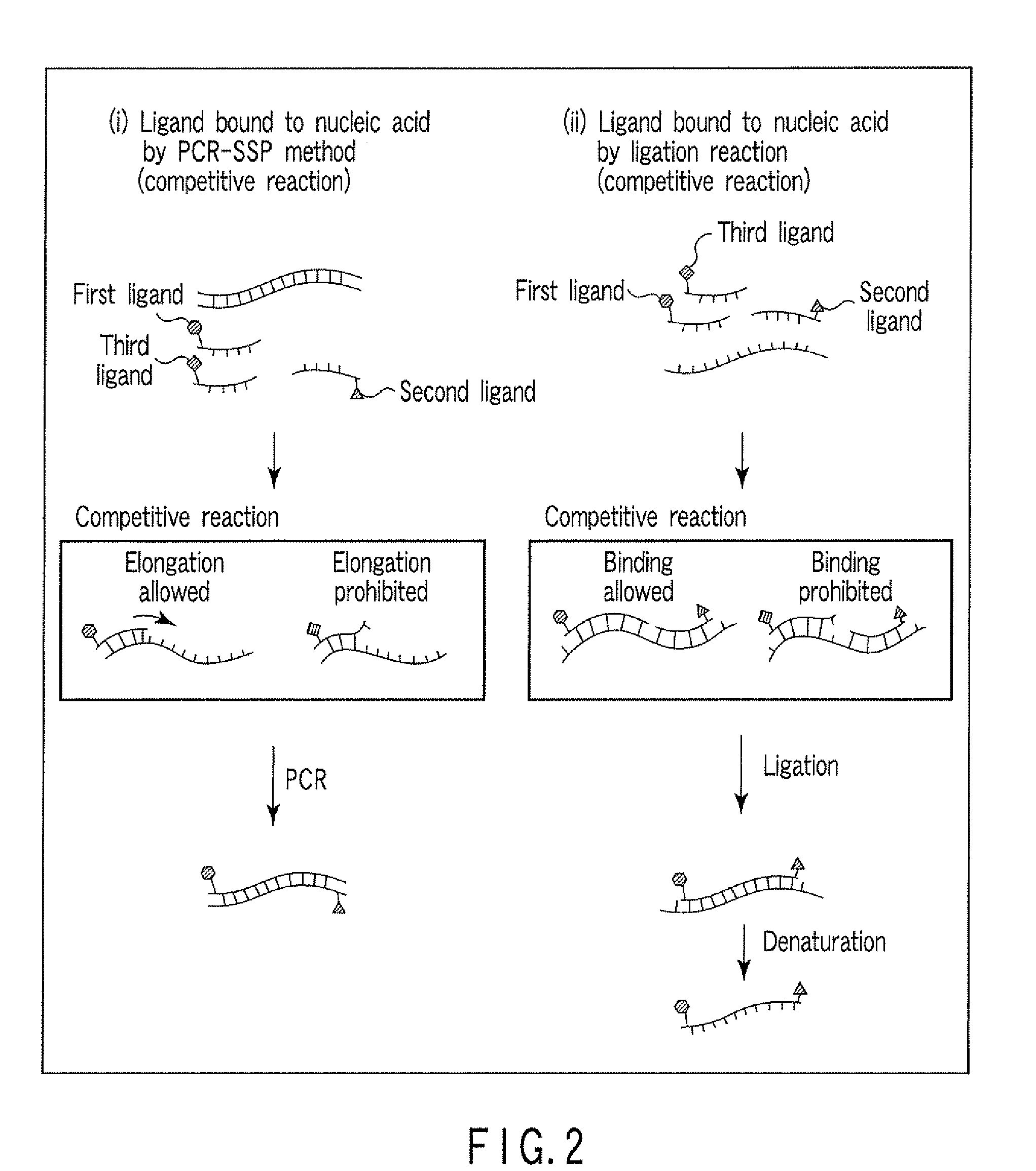Method for detecting nucleic acid
a nucleic acid and detection method technology, applied in the field of nucleic acid detection methods, can solve the problems of difficult to adjust the conditions for the reaction proceeding, insufficient reaction, and difficult to consistently perform hybridization under an optimized reaction condition, and achieve the effect of detecting nucleic acid, shortening the measuring period, and high sensitiveness
- Summary
- Abstract
- Description
- Claims
- Application Information
AI Technical Summary
Benefits of technology
Problems solved by technology
Method used
Image
Examples
example
[0101]A nucleic acid having the single-nucleotide polymorphism shown in FIG. 8 was detected by ligation reaction. Before the ligation reaction, the nucleotide sequences upstream and downstream of the single-nucleotide polymorphism were amplified by PCR for removal of pseudo-sequences and improvement of detection sensitivity. The carrier used was magnetic particles, and the nucleic acid was detected by an enzyme substrate reaction.
[0102]1. Preparation of Reagents
[0103]The following reagents were prepared.[0104]Sample: combinations of human genome DNAs having the sequences shown in FIG. 8
[0105]Combination i: combination of allele A (base at the site # in FIG. 8: A) and allele A (A / A)
[0106]Combination ii: combination of alleles A and G (A / G)
[0107]Combination iii: combination of alleles G and G (C / C)[0108]PCR primer: PCR primer having the sequence shown in FIG. 10[0109]PCR reagent: “Accuprime Super Mix II” manufactured by Invitrogen, catalogue No. 12341-012[0110]Probe: combination of th...
PUM
| Property | Measurement | Unit |
|---|---|---|
| diameter | aaaaa | aaaaa |
| temperature | aaaaa | aaaaa |
| temperature | aaaaa | aaaaa |
Abstract
Description
Claims
Application Information
 Login to View More
Login to View More - R&D
- Intellectual Property
- Life Sciences
- Materials
- Tech Scout
- Unparalleled Data Quality
- Higher Quality Content
- 60% Fewer Hallucinations
Browse by: Latest US Patents, China's latest patents, Technical Efficacy Thesaurus, Application Domain, Technology Topic, Popular Technical Reports.
© 2025 PatSnap. All rights reserved.Legal|Privacy policy|Modern Slavery Act Transparency Statement|Sitemap|About US| Contact US: help@patsnap.com



